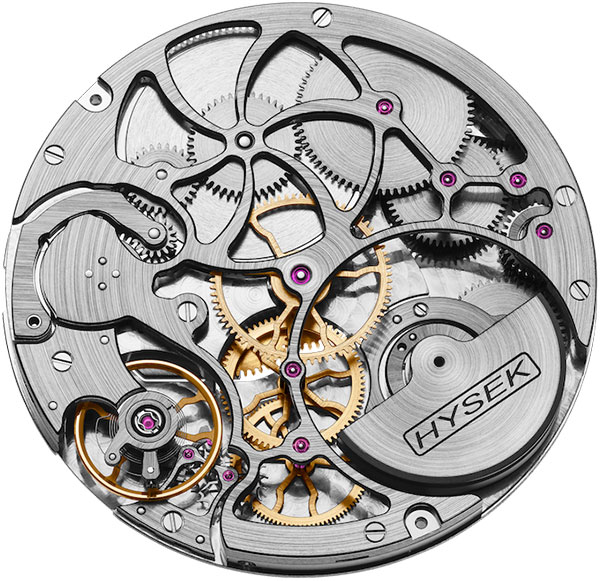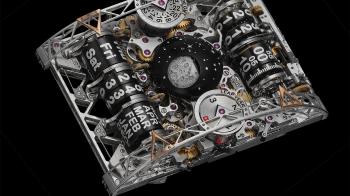Colossal: the watch with rollers
No one had ever succeeded in making a complication to display the time entirely on rollers, like the split-flap departure boards we used to see in airports and railway stations. Many people have tried to translate a similar mechanism into a watch, but the enormous energy consumption involved always resulted in disappointment.
The same goes for roller displays: it’s a wonderful idea, but concrete implementation has proven to be virtually impossible. Until now. Hysek succeeded last year, even pushing the exercise far enough to create a perpetual calendar.
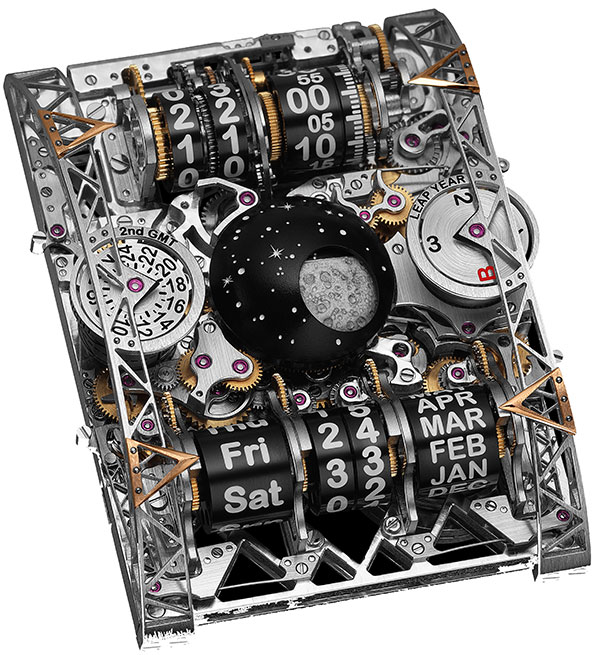
It was a colossal challenge; hence the name. The most obvious difficulty was the notorious conundrum of energy consumption. Moving a roller is not like moving a hand. A roller is far heavier. So the idea of turning eight of them simultaneously is crazy, if you’re not prepared to end up with something that resembles a wardrobe on the wrist, armed with an indecent number of barrels. Hysek got around the problem by optimising the energy cycle, designing ultra-light rollers and reducing friction to an absolute minimum.
The second challenge was that a hand rotates horizontally, while a roller pivots around a vertical axis. It was therefore necessary to design a movement with vertical gearing and multiple returns to activate the eight rollers, without making the watch too unwieldy. It was the ingenious Sergio Silva, who worked in Hysek’s product development department at the time, who achieved the feat with a baroque structure comprising over 1000 components, on six levels!
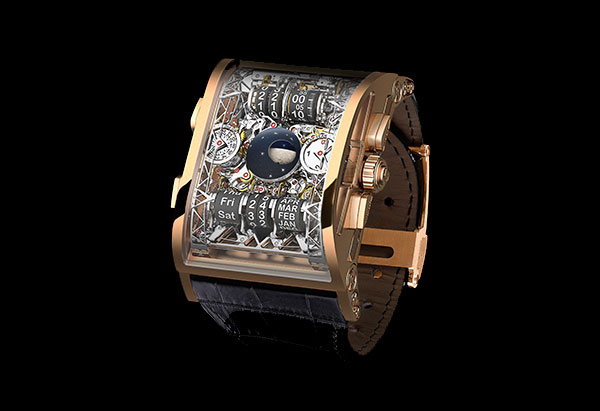
Finally, Hysek wanted to resolve one of the most intractable problems that have plagued jumping hour roller displays: the transition from 23:59 to 00:00. The roller for the hour units (the 3 of 23:59) would normally click over to 4, which would display the non-existent time of 24:00. Hysek therefore developed an exclusive system, a world first in fact, according to which, after 23:00, the 3 briefly rolls back to 9, so that it can then jump logically forward to 0, displaying midnight correctly.
Kalysta, the first 100% manufacture women’s collection
It’s been quite some time since we’ve seen an unusual, creative women’s watch movement. The Margot by Christophe Claret was probably the last, until Hysek’s introduction of the Kalysta, although it doesn’t offer the same level of complication.
It’s a simple idea: jumping hours are displayed in a fixed aperture at 12 o’clock, while the minutes are ticked off by a precious gem that rotates around the dial. The majority of the dial is thus left free for a poetic scene – such as the diamond-paved butterfly of the original models. This jewellery watch, or watch jewel, is legible, original and offers boundless possibilities for creative development.
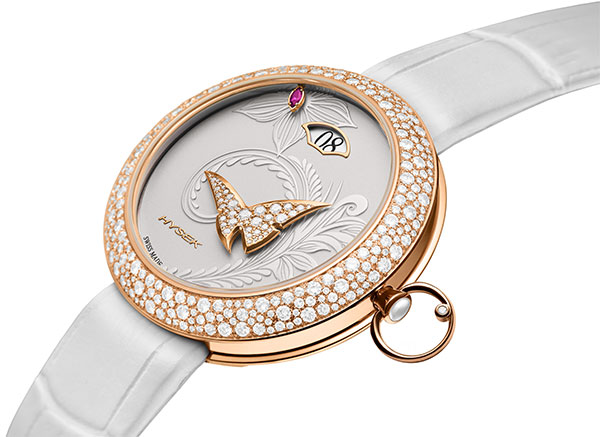
IO Manufacture: the Hysek Alpha
Hysek, which prides itself on ploughing its own furrow, has just unveiled the IO Automatic Manufacture. No complications have been announced, which is precisely what is so interesting about it. In the HW31 calibre that drives the watch, Hysek finally has its own “base” calibre, supplying hours, minutes and seconds. It’s a simple, reliable movement that is all its own, on the basis of which the manufacture will be able to build more affordable collections, add different modules, and produce men’s and women’s versions. With 145 components, it is destined to become a pillar of Hysek’s collections, and is therefore certainly worth keeping a close eye on.
